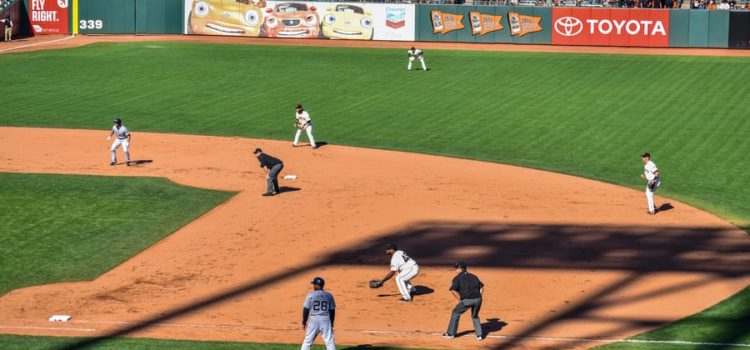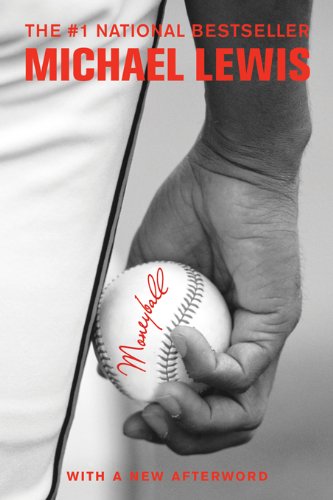

This article is an excerpt from the Shortform summary of "Moneyball" by Michael Lewis. Shortform has the world's best summaries of books you should be reading.
Like this article? Sign up for a free trial here .
What is the trade deadline in baseball? What does the trade deadline in baseball mean for the A’s and their Sabermetrics?
When it comes to the trade deadline, baseball has strict rules. No trading after the deadline. This means teams make fast deals right at the deadline, and this kind of fast-past scheming is where Oakland A’s GM Billy Beane thrives. The trade deadline in baseball is tough—but it’s also an opportunity.
Trade Deadline in Baseball: Making the Trades
Despite Billy’s savvy moves, the 2002 Oakland A’s get off to a rocky start. By mid-May, they are on a losing streak and are six games below .500. Clearly, they are not on pace to meet DePodesta’s 95-win benchmark for a postseason appearance.
The trade deadline in baseball looms ahead on July 31. After this date, teams cannot conduct trades until the end of the season. The trade deadline is a moment of reckoning for every team in the major leagues, when they must take stock and determine whether they are still in contention for the playoffs or whether they should begin planning for next season. Teams that are doing well might decide to be aggressive at the deadline and give up future assets to acquire star players. Teams that are out of contention, meanwhile, will offload expensive stars in exchange for younger and cheaper prospects.
Billy always excels at the trade deadline in baseball. Since 1999, the A’s have always performed remarkably better in the second half of the season, after the deadline, than in the first half. The reason for this is Billy’s shrewdness as a GM and his keen understanding of what his team needs—not to mention the foolishness and shortsightedness of his rival GMs, whose ignorance he consistently exploits.
Superior Information
The A’s organization has quantified the value of every player in their system, as well as every player in the systems of the other teams. They know exactly which players they want to go after, and which players of their own they want to get rid of. Billy’s advantage over his rival GMs is better information: he has a better understanding of value, which enables him to get more from trades than he gives up. Under Beane, the A’s don’t overpay for players and don’t give in to pressure from fans or the media to make desperate deals under pressure—which nearly always lead to a bad outcome.
Oakland’s strategy going into the season is to assemble a roster that is still in legitimate contention at the MLB trade deadline. At that point, Billy will be able to take advantage of other GMs who are looking to offload their stars at a discount. The glut of available players causes their price to drop. The MLB trade deadline is a classic buyer’s market, and Billy knows exactly how to take advantage of it, acquiring players that he could never have afforded at the beginning of the season.
Even before the trade deadline starts, Billy is exploiting the irrationality of the other teams. He has on his own roster players who are overvalued by the rest of the league because they have gone on recent hot streaks, making them look better than they actually are. This causes other GMs to overstate the true worth of these players, looking at short-term trends instead of long-term performance. Either way, Billy Beane is happy to let these players’ stocks rise.
One such player is Carlos Pena. At the beginning of the month, Billy deals the overvalued Pena to Detroit in exchange for ace pitcher Jeff Weaver and $600,000 in cash. He then trades the pricey Weaver to the Yankees (who think nothing of his $2.6 million salary) in exchange for two excellent prospects and the highly underrated pitcher Ted Lilly. It is a classic Billy Beane trade, trading an inferior player for a superior one while cutting costs.
A few weeks before the MLB trade deadline, baseball GM Billy shops pitcher Cory Lidle around the league. Lidle has performed poorly all season, but he’s now on a hot streak. This causes Lidle’s stock to rise in the eyes of GMs who only look at the short-term. Billy sees that he is overvalued and knows that the time is ripe to get maximum return for Lidle. To his surprise, the Chicago White Sox are willing to give up All-Star second baseman Ray Durham for Lidle and a Triple-A pitcher.
Beane acquires Durham, however, for different reasons than those valued by his scouting staff. They like his speed and ability to steal bases, attributes which Billy sees as adding little value to the team. Instead, Billy prizes Durham’s success in getting on base and not making outs.
Billy knows that Durham, who will become a free agent when his contract expires at the end of the season, will be too expensive for the A’s to retain past 2002. But this is part of the strategy. Durham is a rental, someone who will be used for a deep playoff run this year and then allowed to walk after the season. The A’s will also receive a compensatory first-round draft pick from the team that signs Durham, a valuable opportunity for Oakland to inexpensively replenish their roster.
Ricardo Rincon
On July 1, a month out from the trade deadline in baseball, the A’s stand at 46-36, good for third place in the AL West, six games behind the division-leading Seattle Mariners. As the deadline approaches, Beane wants to acquire Cleveland Indians pitcher Ricardo Rincon. The Indians, all but eliminated from making the playoffs, are looking to get rid of Rincon, but their GM tells Beane that another team, the San Francisco Giants, is also interested in the pitcher.
Billy is also hemmed in by financial constraints: Rincon is owed $508,000 for the rest of the season, money that the A’s don’t have. Billy needs to both outbid the Giants (or at least convince the Indians that his is the better offer) and find a way to pay Rincon’s salary. He needs to shed some money from his team’s current payroll to make room for Rincon.
The Attempted Cliff Floyd Gambit
That day, as Billy works the phones, he learns through one of his media contacts that Montreal Expos left fielder Cliff Floyd is going to be traded to the Boston Red Sox. In this development, Billy sees an opportunity. For while the A’s could never afford to pay a player like Floyd, he knows that the Red Sox can do so quite easily, and are actually desperate to acquire the left fielder. The Red Sox have violated one of Billy’s cardinal rules about never making a deal out of a perceived necessity—they have convinced themselves that they must have Floyd by any means necessary and are willing to pay any price to get him. This naturally puts Boston in a dreadful negotiating position, and Billy thinks he can get Floyd in time for the MLB trade deadline.
Billy doesn’t want Floyd to actually play for the Oakland A’s. Instead, he wants to acquire Floyd to use as trade bait for the Red Sox. Floyd will be pure leverage—almost ransom—in Billy’s negotiations with Boston, enabling him to take whatever he wants from the Red Sox. But first, he needs to actually get Floyd, even if it’s only to trade him a few hours later. And that means he has to kill Montreal’s plans to deal Floyd directly to Boston.
When it comes to the trade deadline, baseball teams might come out successful, and might not. There’s always a risk, but the trade deadline in baseball is an opportune time for teams to shake up their rosters.

———End of Preview———
Like what you just read? Read the rest of the world's best summary of Michael Lewis's "Moneyball" at Shortform .
Here's what you'll find in our full Moneyball summary :
- How Billy Beane first flamed out as a baseball player before becoming a general manager
- The unconventional methods the Athletics used to recruit undervalued players
- How Sabermetrics influences American baseball today






